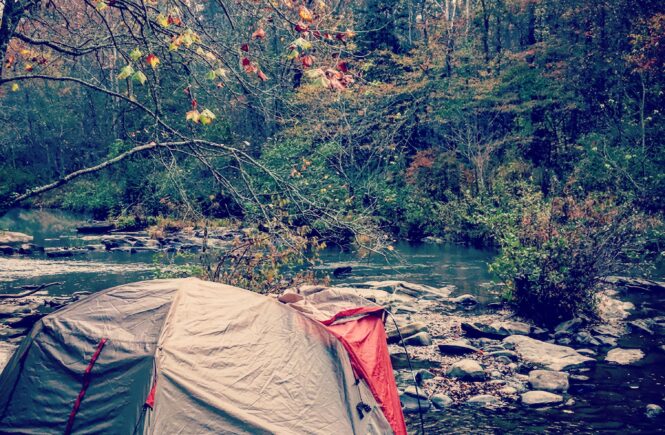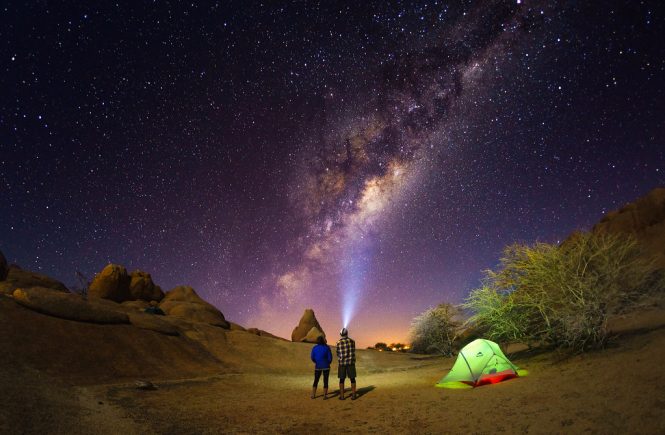It is no question that the modern world has afforded us with conveniences that our ancestors had to live without.
Today, most of us cannot live a week or even a day without these conveniences making life rather challenging when we are compelled to live outdoors with the outside elements. It is still without doubt that humans have become increasingly dependent on modern conveniences and technology for everything that it is kind of hard to imagine yourself in a situation where these things are absent for a long while making is ill-equipped to handle a situation where the tides might turn and something goes awry. However, this is not to say that humans are not at all prepared to take on the wild. After all, if there is anything that the camping activity has taught us, it is the fact that even modern humans can make it and survive outdoors with the barest necessities.
This is not to say that humans have not found a work around it however. After all, over the years, there have been innovations and ingenious items that would make survival out in the wild a little more comfortable and easy. However, even if we would all like to imagine that we are experts in outdoor survival, the truth is, most of us do not have the slightest clue of what we should do if ever that were to occur. Not to worry though, that is what this comprehensive guide is for. In here, you will find all the information necessary to help you survive the worst that nature can throw at you.
HOW TO SURVIVE THE OUTDOORS
Master your attitude
If you are ever in a wilderness situation that is less than ideal, it is imperative that you gauge your attitude towards it. Any survival situation gives you no time to panic which means that you are likely to survive if you maintained a more positive and optimistic attitude. So, gather your wits and proceed to develop a plan.
Organize a tactical backpack
You might think that filling a bag with equipment and supplies will be enough to aid you on your survival mission. However, you are going to need more than just food items and standard equipment to survive out in the wilderness. For one, you need to ensure that your bag is properly organized so that you can rely on it to get you out of gnarly situations. Apart from that, ensure that the bag is balanced as you are going to be carrying it for quite a while. In this regard, you need to distribute the load evenly so that it will be easy to carry. Similarly, you need to organize the bag and ensure that all of the equipment you routinely use would be accessible without sifting through the other items packed inside.

Source: Just rough in it
Prepare a survival kit
Your survival kit should contain all of the items that you would need in case anything goes awry. In this regard, you can think of it as your contingency plan if anything untoward happens. If a survival situation develops, here are some of the items your survival kit should contain:
- Map and compass
- Mobile phone
- Whistle
- Rain gear
- Extra clothing
- Fire starters or matches
- Water bottles
- Multi-tool
First aid kit that contains the following:
- Six adhesive bandages
- One gauze roll
- One antiseptic ointment
- One triangular bandage
- One roll adhesive tapes
- Two sterile gauze pads
Keep in mind that you can customize your survival kits depending on your survival style. Regardless of what your survival kit may contain, the goal remains the same: To have a collection of gear to be used only during an emergency.
Know the area before you go
Before planning any sort of camping expedition trip, it is imperative that you know the area first before you go. This means knowing the weather patterns, potential hazards as well as some insider’s tips before setting off. Apart from that, you should have a very detailed map with you and once you have decided on leaving, make sure that you tell someone your plans as well as your time of return. In this regard, they can contact authorities should you fail to return on the said time.

Know the Rule of Threes
While there is no precise way to judge things like how long you can survive in the cold or without water, there are pretty good estimates. One of these is the “Rule of Threes”. The rule comes in three parts:
1.) You can only survive about 3 hours in the cold before your body shows signs of hypothermia
2.) You can survive without water for 3 days.
3.) You can survive three weeks without food.
While all three might be true, this does not mean that you would be up and about. For the most part, you would feel listless. However, it means that you can survive and not die. But, this does not mean that you should go that long in the cold, without water and without food just because you can still survive.
Find water sources
Knowing where you can get clean and uncontaminated water is essential to survival. If there are no clean bodies of water around, you can collect rainwater to store and drink. However, if there is a river or lake nearby, you can boil the water before drinking it as boiling will kill off any pathogens.

Learn natural navigation
Keep in mind that while a map may be handy, it is imperative to know a little natural navigation as well. Your fancy GPS might be helpful, but nature’s compass can be a great help. Watch the night sky and look for the north star to measure your approximate latitude; just point one arm at the star and stretch the other arm horizontal and estimate the angle. Keep in mind that the North Star is not very bright (it actually blends into the backdrop of stars). Look for it by locating the Big Dipper and follow the line created by the two points at the front of the ‘ladle’ directly to the North Star. In a sense, the North Star is also the tip of the handle of the ‘Little Dipper’.

Learn to forage for food
While you can always bring a supply of food with you, keep in mind that on an extended stay, these may not be enough. In this regard, it is imperative to forage for food and determine which plants are edible and which ones are not. One thing to keep in mind is that poisonous plants typically have thorns and spikes, taste bitter and have a milky sap. If the plants you harvest fall into any of the three categories, keep away from them at all cost. To learn more about edible and inedible plants, research as much as you can and educate yourself before venturing out in the wild.
Improvise
Venturing out in the wilderness means that you are going to be without modern conveniences for quite a while. While you might have camping and survival tools, there may still be some situations that compel you to improvise. In this regard, you need to think on your toes. How well you improvise drastically improves your survival rate. So, be crafty and inventive. In this case, if you are out of matches and do not have a lighter, you need to think of another way to start a fire.
Remember that regardless of how prepared you are, the outdoors and the wilderness have always been something of a wildcard in the sense that you can be injured, lost or stranded. With this in mind, always make every effort to avoid a survival situation by knowing your location at all times. Keep calm, do not panic and focus on your plan for survival. Most importantly, always remember to tell someone where you are going and when you will be back.



